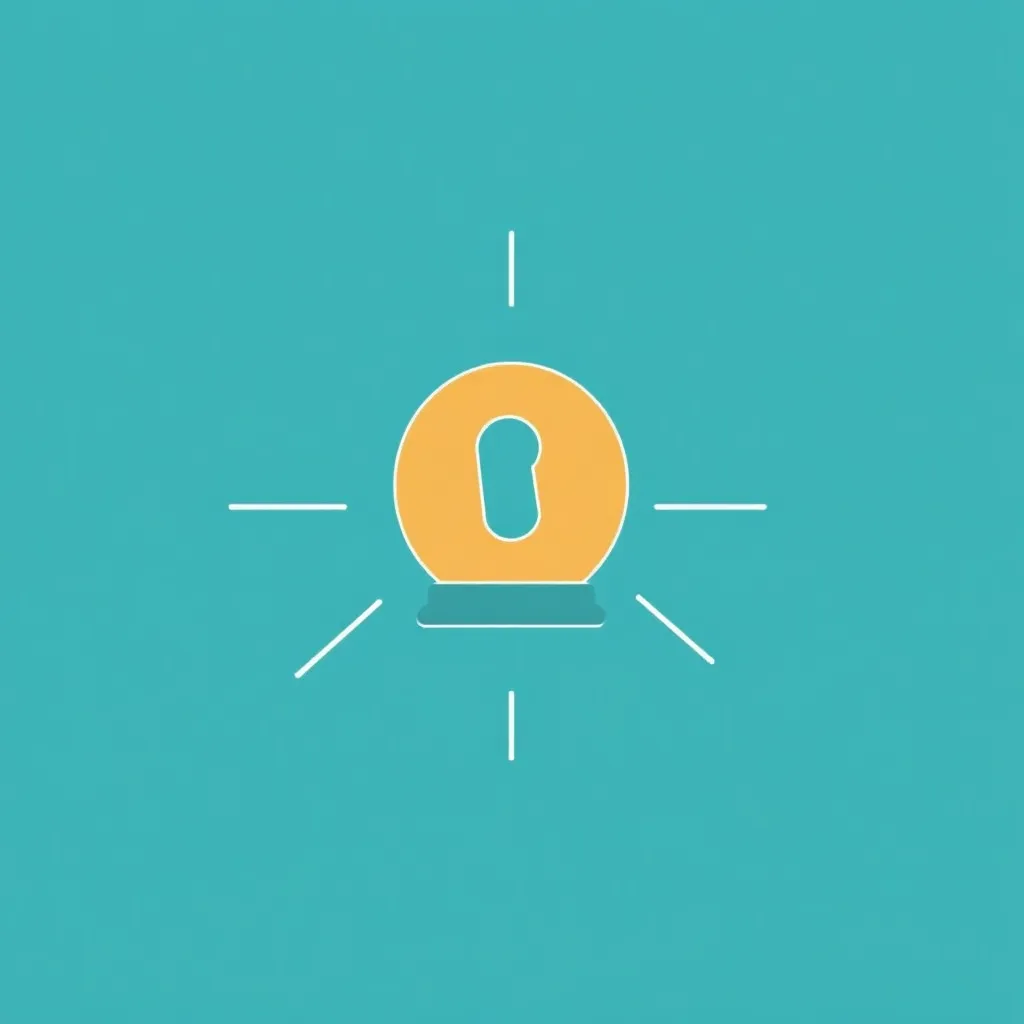A Domain Check allows you to check in just a few seconds whether your desired domain is still available or has already been taken. In this article, you will find out what really matters when checking, which tools will help you and how you can secure the ideal domain for your website.
Key points
- Brand impact and SEO are closely related to the domain name
- Availability of the domain can be checked quickly online
- Tools like Instant Domain Search deliver results directly
- Alternatives worth checking for assigned domains
- Endings such as .com, .de or .net influence the target group approach

Why the domain check is more than just freestyle
Every online presence starts with the name - the domain. Your domain name directly influences how people think about your brand and how easily they find your site. A clear domain name remains better in the mind and strengthens recognizability. At the same time, it plays a decisive role for SEOi.e. findability on Google and other search engines.
Among other things, search engines attach importance to keywords in the URL. So if you choose a domain that contains the central terms of your service, you will benefit from better rankings. Trust and reliability are also linked to the choice of domain: A professional web address is clicked on more often and visited for longer.
Five steps to your desired domain
A domain check is straightforward if you use the right tool. You can find out within a few minutes whether your idea for a domain is still feasible. The following procedure has proven itself:
- Use a tool such as Instant Domain Search, DNS Checker or the search mask of hosting providers such as STRATO.
- Type in your desired domain name and start the check.
- The tool shows you immediately whether the domain is free or already taken.
- If it is not available, you will usually receive several alternative suggestions - both with other names and with different endings.
- Secure the free domain of your choice as directly as possible, because good domains are in demand and quickly disappear.

What makes a perfect domain
The best name is of little use if no one recognizes it or spells it wrong. That's why I stick to a few simple but tried and tested principles when choosing a domain. The domain should short, clear and easy to type. Ideally, it should contain key terms from your service or offer.
Focus on your brand: If your company already has a name, use it. This increases recognition and strengthens your professional image. Longer names or names with difficult spellings quickly come across as unprofessional and increase the bounce rate.
The TLD - the top-level domain - also plays a role. For German target groups .de internationally, .com can be useful. Alternatives such as .store or .app are also available, but should suit the industry.

Avoid typical mistakes when choosing a domain
A common mistake: the domain name is too similar to existing trademarks. This can cause legal problems - or deter visitors. Make sure you don't use any trademarked terms. Equally unfavorable are too many numbers or special characters such as hyphens, as they make entry more difficult.
Avoid trendy terms or abbreviations that change quickly or that not everyone understands. Also think about how the domain sounds when spoken - it should be clearly understandable when called on the phone. As a rule, you should avoid typos or similar mistakes so as not to lose visitors.
Which endings work - and which don't?
The choice of TLD influences how your site is perceived. Classic endings such as .de, .com and .net are considered trustworthy and established. New TLDs such as .berlin or .xyz may be original, but they can look dubious if they don't match the domain. In some cases, they still make sense - for example, if your focus is local.
| TLD | Suitable for | Perception |
|---|---|---|
| .de | Germany, local companies | Serious, established |
| .com | Internationally oriented offers | Professional, globally recognizable |
| .net | Technology, Hosting, Startups | Technical, functional |
| .xyz, .online etc. | Innovative ideas, creative concepts | Unconventional, modern |

What to do if your domain is already taken?
If the desired name is no longer available, this does not mean that you have to give up. I recommend that you check other TLDs first: One .net or .online ending can be a solid alternative. However, if these variants don't sound convincing, you can use hyphens or additional words: for example, "my-website.com" or "onlineshop24.com".
However, if you are very interested in this particular name, it is worth contacting the owner via the legal notice. Perhaps the owner is willing to sell the domain. Prices for good domains are between €250 and €5,000 depending on the value - in some cases even higher.

Implement domain registration correctly
Once you have found a free domain, you should register it directly. Most providers only need two to five minutes to do this. When choosing your registrar, pay attention to Transparency in prices and flexibility in contract terms. Many companies offer monthly cancelable packages, while others require an annual upfront payment.
Before you click, be sure to check whether additional services are automatically included. Email functions, SSL certificates or DNS management can be useful, but you should be able to actively select them. Compare the options of several hosting providers thoroughly before making a decision.

Practical tips for maintaining and managing your domain
After successful registration, you shouldn't sit back and relax. Domains need continuous maintenance so that you can benefit from them in the long term. One of the most important factors is the regular renewal of your domain. Although many providers offer automatic renewals, you should always keep an eye on when your contract term ends. If it comes to an end, it may be taken over by other interested parties immediately if you don't renew in time.
Another point is the Domain Privacy-feature, which is also available from many providers. This allows you to anonymize or at least restrict the contact details displayed in the Whois directory. This can be particularly useful if you do not want to publish your private address - especially to avoid spam or unwanted advertising calls.
Also think about setting up suitable subdomains for different project units. Whether you want to set up a blog at subdomain.yourname.com or a support portal at help.yourname.com - the clearer you separate your services, the easier it is to communicate with the outside world. Also make sure you have a consistent structure that offers your visitors a uniform user experience.
If you are planning international projects, it is also advisable to manage several country domains. For example, you can use .fr for France or .co.uk for the UK to target visitors in the respective markets. However, managing multiple domains requires careful organization so that it doesn't end in chaos.
Domain advanced: Subdomains, redirects & DNS entries
In addition to basic registration, there are numerous options for customizing your domain. Subdomains are suitable for clearly separating different areas of your website or for creating targeted landing pages for special promotions. This also allows you to better segment your offering, for example by using blogs.yourname.com for your blog and store.yourname.com for an online store.
Forwarding are particularly helpful if you have several domains. For example, you can redirect all traffic from your .net version to your main website with a .de extension. Visitors who mistype or enter a slightly different domain in the address bar will still end up where you want them to be. This is not only user-friendly, but can also bring additional traffic because you can stick to all variants.
It is also important to have the right DNS records. These are the basics of how your domain is accessible on the internet. Whether A records (for the assignment to an IP address) or CNAME records (for alias entries) - correct DNS configurations are essential for smooth access to your pages, email functions and other services. Errors in the DNS settings can quickly lead to your website being unavailable or emails not being delivered.
Global expansion: using country-specific endings sensibly
If you already know that your offering is international or is set to expand in the future, it can be tactically smart, regional or country-specific TLDs early on. For example, .at is for Austria, .ch for Switzerland or .eu for the European region. This gives you the advantage of improving local search engine rankings in the individual countries and benefiting from greater regional relevance.
However, it is worth weighing up the additional work involved in maintaining multiple domains against the benefits. While on the one hand you have the opportunity to appear directly in several countries with a local domain, you also have to adapt your content, hosting and SEO strategies accordingly. Poor or incomplete localizations quickly look unprofessional. I recommend that you only register the most important domains that you really want to actively use. Otherwise, you will tie up time and budget without achieving any real added value.
Branding & consistency: why social media channels are important
For many projects, it is not only the domain itself that plays a role, but also how consistent all digital channels appear. In addition to checking the availability of your desired domain, also directly check corresponding social media names on platforms such as Facebook, Instagram, X (formerly Twitter) or LinkedIn. A consistent name significantly increases recognition value and makes it easier for your customers to find you everywhere.
If you succeed in implementing consistent branding, you will create trust and reliability. Make sure that you include your main domain in all social media profiles so that visitors to your social channels can quickly access your website. Conversely, the links to your social media channels should be directly available on your website. This will help you build a coherent network that reinforces each other.
Dealing with brands and rebranding
It often happens that companies change their name or logo over time. A Rebranding can have various reasons: Perhaps the old name no longer fits the expanded range, or you want to modernize your image. Careful planning is essential here so that existing customers can understand the transition and new prospects don't feel confused.
First of all, you should check whether the domain that matches the new brand identity is available and whether it is legally compliant. You can then set up a redirect from the old website to the new one so that nobody is "left behind". Communicate the change proactively via all channels and update business cards, email signatures and any other place where your domain is visible.
Domain auctions and determining the domain value
Some coveted domains are not simply offered via common registrars, but end up in Domain auctions or on marketplaces. Sometimes you can get real bargains there, but high prices are also not uncommon. If you take part in such an auction, you should realistically assess the potential benefit beforehand. A memorable domain can serve as a valuable marketing factor in the long term, but is only worthwhile if it strengthens your brand and is SEO-relevant.
The value of a domain depends on various factors, including length, keyword relevance, traffic data (if the domain already exists) and general demand. Prices often skyrocket, especially for popular generic terms or particularly short domains (e.g. two- or three-character names). Your own budget and the question of how much the domain will contribute to the success of your website in the long term are crucial here.
Legal issues and disputes relating to the domain
Ideally, your desired domain belongs to you and you can use it indefinitely. However, there are always disputes when a trademark owner discovers that a similar domain already exists. Be careful not to use protected trademarks or company names to avoid legal disputes. If you yourself have the impression that someone is infringing your trademark rights, trademark law offers the possibility of demanding the release of a domain.
In some cases it is worthwhile Domain Dispute Resolution Procedure - This is an out-of-court procedure for quickly resolving conflicts relating to trademark and domain law. Here it is examined whether there is actually a trademark infringement or unfair intent. Such proceedings can be cost-intensive, which is why prevention is better than cure. Therefore, always find out about possible trademark registrations before you decide to register a domain.
What matters in the end
Your domain name is not just an address - it is often the first impression someone gets of your project. I recommend that you take your time to strategically choose your domain name and cleverly combine SEO, recognition and target group. It's best to manage your Domain Check immediately when you have a good idea.
Avoid hasty decisions, but also remember: popular domains are quickly taken. However, with a well thought-out concept, the right tools and a little creativity, you can find the right web address - and secure a valuable advantage in the digital competition.



